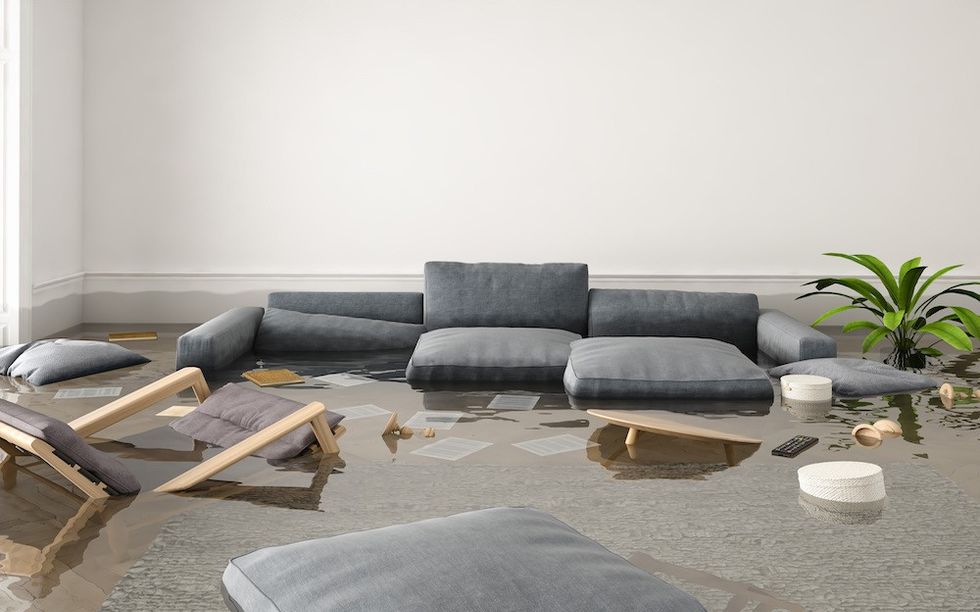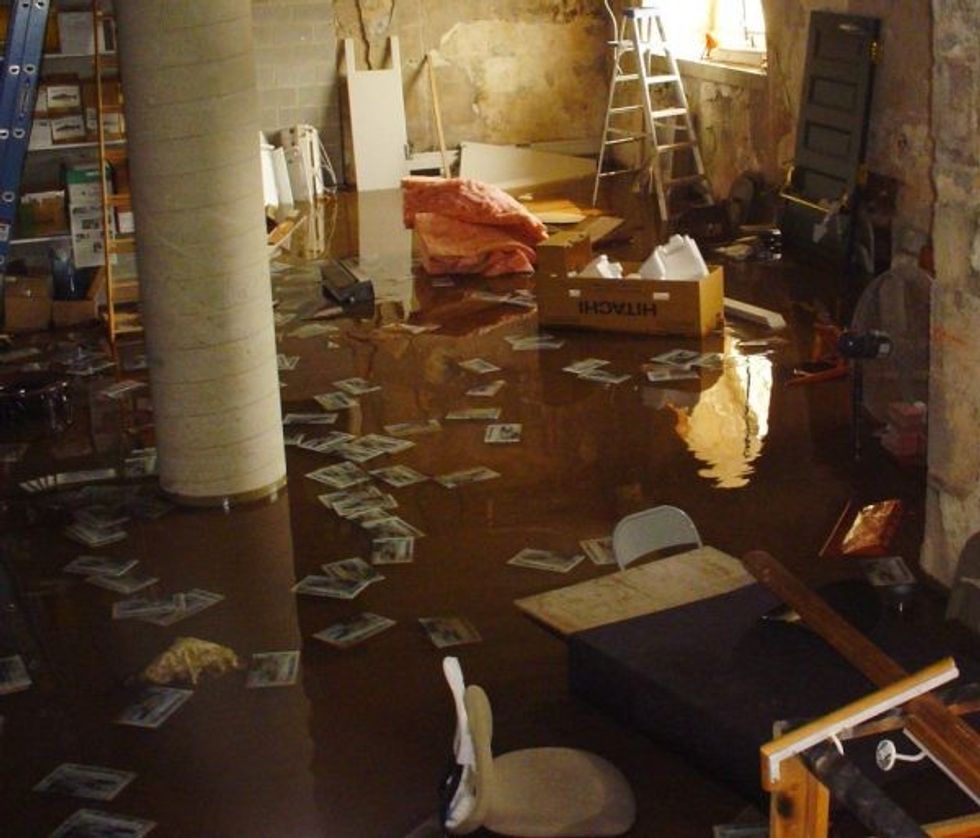Home floods can happen to the best of us, even if you live in a sprawling multi-million-dollar Bridle Path mansion. Just ask Drake. Yesterday, the Toronto-based superstar joined countless other city residents and took to social media to post dramatic footage of a large flood that enveloped the floor of his luxurious home.
While the images and videos of Toronto’s widespread floods made for captivating scrolling and sharing, the reality is that they left some serious damage for many shocked homeowners.
So, while the damage may be done, it’s now time to repair and rebuild for many Toronto homeowners. Knowing where to start, however, may be a daunting task for some. It’s especially so for those without proper insurance. A 2022 study by BNN Bloomberg and RATESDOTCA found that half of respondents don't have overland water damage insurance. It found that 32% of homeowners were unaware that “standard home insurance policies don’t cover water damage from seepage, overland flooding, or sewer backup.”
Standard home insurance policies typically cover water-related incidents like pipe bursts or malfunctioning appliances, but it’s these big weather-related floods that can cause the most damage and really take a toll on your bank account. Insurance companies have started to offer such coverage in recent years, but the uptake appears to be slow (as in, no match for climate change). According to the survey, half of respondents said they don’t have additional water insurance coverage.
Before insurance even comes into play, however, there are some immediate actions that should be taken.

Call The City
For those still dealing with floods (perhaps you arrived home from vacation today to one), according to the City of Toronto website, its crews are available around the clock to respond to calls regarding flooded basements. In the event of a flooded basement, the City advises to call 311 immediately to report the incident for further investigation. Although this is admittedly a tough one (especially when valuables and pricey furniture is concerned), the City advises not to enter the flooded basement. If flooding occurs when the power is on, residents are asked to call Toronto Hydro (416-542-8000) immediately to disconnect your power to prevent shock or electrocution in the event that water has risen above outlets or near the electrical panel. As the City highlights, water could extinguish a pilot light on a gas appliance, so leave the house immediately and contact the gas company if you detect gas.
Document Everything
If you do have insurance, the City advises to call your insurance company as soon as possible to report any damage caused by the flooding. Document as much as you can: take photos of damage caused by the flooding and keep receipts from emergency repair or clean-up work. As the City states, in no uncertain terms, if the flood is caused by a private blocked drain pipe, leaking foundation walls, or poor lot drainage on a homeowners property, they are responsible for repairs and any subsequent damage as a result of the flood. In other cases, homeowners are able to submit a claim to the City of Toronto via 311 to prove that any flood damages were due to the City’s negligence.
Stay Clean
When it comes to health and safety concerns, in addition to disconnecting the power, homeowners should consider hiring a professional cleaning company that's familiar with cleaning contaminated areas to remove the water. A licensed electrical contractor should be brought in to assess any potential electrical hazards. Any contaminated items (i.e. fabrics and textiles) that can't be washed and disinfected should be discarded. It's also important to remove and discard drywall and insulation that was contaminated with flood waters. Sanitize all floors, walls, and surfaces, and thoroughly dry and ventilate the area. It goes without saying (but you never know); be diligent in keeping kids and pets out of the flooded area.
The good news is that homeowners can take steps to help reduce or prevent basement flooding from happening in the future, including using the city's basement flooding protection subsidy program. With this, owners of a single-family, duplex, triplex or fourplex residential home can apply online for a subsidy of up to $3,400 per property to install flood protection devices. Eligible work includes: installation of a backwater valve; installation of a sump pump; severance and capping of a home’s storm sewer or external weeping tile connection. According to the City, disconnecting the downspouts from your property’s eavestrough system is not eligible for a subsidy.
Yesterday’s devastating storm may have been Toronto's worst in recent decades, but it’s not an isolated incident. In January 2020, the city saw a record-breaking rainfall that also resulted in widespread flooding. As climate-related storms increase in frequency and intensity, water damage will only grow as a top concern – and potential cost – for homeowners (and their basement tenants).



















